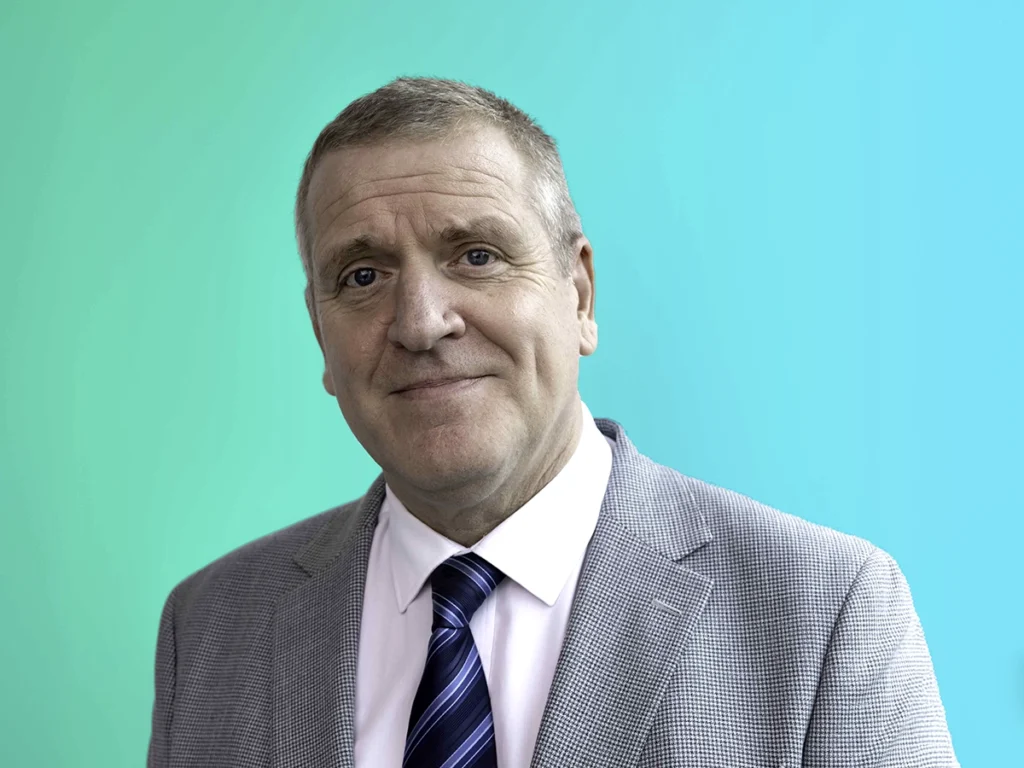Welcome to the second in our series of Forward Thinking articles.
As the year draws to a close, we’re reflecting on recent changes, and looking ahead to 2026 and beyond. We asked Brian Loft, Leep’s director of operations, to share what’s on his radar.
What role will technology play in the next generation of utility networks?
In the water sector in particular, the onus is increasingly on companies in terms of water resource planning, waste of water, and what we call water balancing – and new technology is already helping us with this. Leep is on a mission to have bulk metering by the end of the year, so we’re able to account for all the water coming into our network.
We’re also on a journey to transfer our end-customer meters over to AMI technology – we’re expecting to have this in place for more than a quarter of our installed base by the end of the year, and we’ll be working hard to try and deliver the rest in 2026. This will give us real-time water balancing on over a quarter of our connections.
Another big use for technology is also going to be for modelling; it helps us predict the likely power demands of a development. This can be crucial for developers who want to understand a viable load demand for the needs of the proposed development, and to optimise how it’s used.
How will these new digital tools help customers?
Tools like AMI already provide a benefit for our customers. For example, we recently acquired another utility company’s water business and upgraded half of a large site to AMI meters , as a trial. Almost immediately we were able to identify seven properties with behind-the-meter leaks. AMI helps prevent customers receiving huge bills for water they haven’t used, and reducing wasted water is obviously better for the environment too.
Developers get the same benefits too. Building sites are complex locations with a lot of traffic – it doesn’t take much for machinery to damage a water pipe. With AMI and bulk meter logging information, we can see this as soon as it happens, reducing the costs and impact for the developer.
On the electricity side, microgrid technology will be essential to managing electricity use, generation and storage. For example, optimising when storage batteries charge and discharge to the grid can really help customers get most value for that infrastructure. We’re also seeing batteries and solar being used to optimise EV hub infrastructure, and again, technology can help us with achieving that optimisation. For customers these are real opportunities to drive down the cost of ownership.
What are the biggest operational pains for developers moving forward? And what are the solutions?
I think it’s going to be the planning of sites and making sure they’re balancing capability with demand reduction. So whether that’s water, electric or heat, minimising the actual demand on area and national infrastructure.
Also, getting ready for technological change before it happens. We need to help developers put decarbonisation plans in place, where they’re relevant, from the beginning. A good example is the transition away from combined heat and power plants (CHP). In their day they were seen as environmentally friendly – the value of scale from centralised gas-fired production, rather than having many individual boilers or power producers. But technology and views have changed. There are lots of alternative options (for example air source or water source heat pumps) but they don’t offer all the same benefits as CHP and way forward isn’t always clear.
We’ll be working with developers to face this specific challenge, particularly over the next year as new heat network regulations come in and the practical and contractual changes needed become clear to us.
How do you think modernised networks will affect the way you operate?
We talked above about how technologies such as microgrids – which will include infrastructure, batteries and smart management tools – will increasingly be used by developers to meet new power expectations. It’s great technology, but it will require us to change how we do maintenance. From a safety perspective, we have to be more aware of what’s actually on a site – for example, you can no longer switch off supply to a site and assume it’s safe to work on. In the future we’ll be compiling a register of behind-the-meter generation, but if there is a microgrid, the battery storage and solar power elements will still be operating. We will have to change our processes, our procedures and monitoring to account for more behind-the-meter infrastructure.
The second key thing we’ll need to address is data access. With requirements to report on environmental, social and governance (ESG), some customers want the ability to monitor the networks themselves, so that they can understand what’s used by their customers, and what their own landlord usage is. This is just one example, but we’ll be looking into how we can deliver this sort of value-added service for customers.

